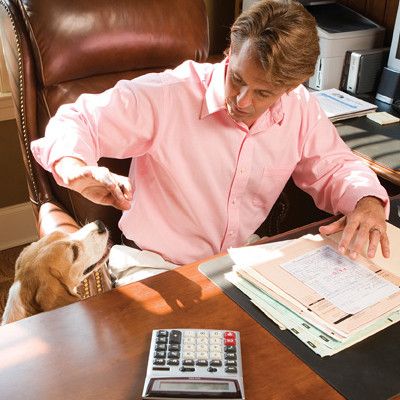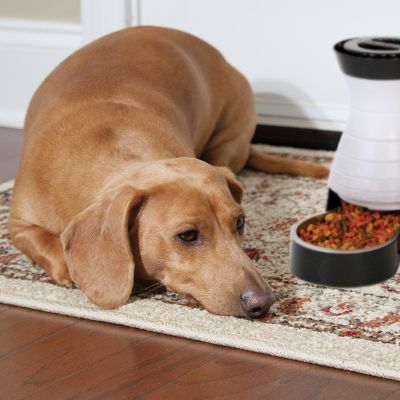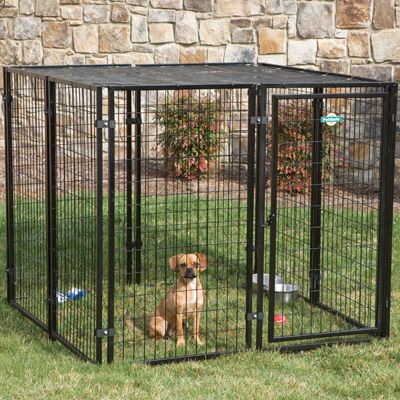About 15% of dogs have separation anxiety. Separation anxiety in dogs is actually a phobia, an extreme or irrational fear, in which dogs panic when left alone. There are many reasons dogs can display signs of separation anxiety that are not really due to separation anxiety, and correct diagnosis is important for appropriate treatment.
 What Are the Common Signs of Separation Anxiety?
What Are the Common Signs of Separation Anxiety?
When You're Home
- Anxiety as you prepare to leave the house - following you, pacing, panting, salivating, trembling, or whining when he notices pre-departure cues such as when you change clothes or pick up your keys
- "Velcro dog" - following you around the house or even panicking when you leave the room for a few minutes.
- Excessive greeting behavior when you return home
When You're Gone
-
 Going to the bathroom in the house
Going to the bathroom in the house - Destruction, especially to the door you left through or windows near the door
- Barking, whining, and howling
- Self-inflicted trauma - breaking teeth or cuts to the skin, mouth, and teeth trying to escape
- Not eating when home alone
With separation anxiety, all of these signs occur when your dog is home alone. Your dog will usually start showing these signs within 30 minutes of being left alone. You'll usually see anxiety each time you leave your dog alone, but some dogs only feel anxious in certain situations. For example, some dogs feel anxious only when you leave and come back, or when they're at home alone but not when they're in the car or at your vacation home.
Videotaping your dog home alone is often essential in making a diagnosis. Videotaping should only be performed in a safe manner without putting the dog in a situation where he could physically harm himself.
What Are Other Causes of Accidents, Destruction, & Barking When Home Alone?
Does your dog show any of the above signs when home alone? There are a few other issues with similar symptoms as separation anxiety. Rule out these other issues before diagnosing your dog with separation anxiety.
-
 Urinary Tract Infection - dogs with a UTI or other medical issue often whine when trying to use the bathroom or have an accident inside
Urinary Tract Infection - dogs with a UTI or other medical issue often whine when trying to use the bathroom or have an accident inside - Territorial/predatory aggression - dogs might bark or chew inappropriately if they're upset at seeing passerby or fight with other pets in the home
- Barrier frustration - dogs who want to get through a door or window to something outside bark and scratch or chew on the door
- Boredom - dogs bark or chew furniture if they're bored or don't have engaging toys o Play/exploratory behavior - puppies less than 1 year old explore with their mouths and might destroy doors, windows, or furniture
- Noise phobia - fireworks during the holidays can scare dogs enough to bark, destroy things, or pee in the house
- Crate or confinement anxiety - some dogs don't like being in a crate or small room and respond by barking, whining, destroying beds/toys, and having accidents
- Senility - older dogs with memory problems are more prone to barking, chewing, or peeing in the house
How Do I Know If My Dog Has Separation Anxiety?
First, ask your vet to perform a full physical exam performed to rule out any medical causes that could be causing or contributing to this behavior. Your veterinarian may recommend additional testing based on the results of your dog's physical exam. Once medical causes are ruled out, behavioral causes should be explored.
In the next article, we'll explore training options to help your dog cope with being home alone.









